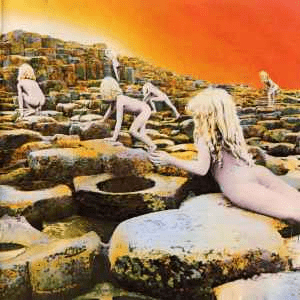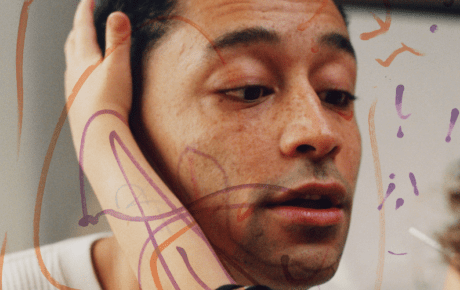The year is 1973, the Chinese year of the Ox, and the world is about to make some major adjustments in how we the human race perceive ourselves and our relationship with the world around us and its future. It starts with Elvis Presley making history with his Aloha from Hawaii concert, which aired on January 14th via satellite from the then Honolulu International Centre. It was the first live satellite broadcast to feature a single performer and went out to approximately three dozen countries in Asia and the Oceania region. This, of course, would change music forever.
A series of historical events would then follow. The very next day President Nixon suspended all military action against North Vietnam and thus, effectively ended the United States involvement with the Vietnam War; January 22nd saw boxer George Foreman knock Heavy Weight Champ Joe Frazier off his feet 6 times in Kingston, Jamaica before knocking him out cold, 1 minute and 35 seconds into the second round, the 30th of January saw the birth of a musical mega giant with Kiss playing their first ever show at the Coventry Club in Queens, New York to a crowd of less than 10 people. And on March 1st, Pink Floyd released their masterpiece concept album Dark Side of the Moon, which would come to sit in the Billboard 200 for 736 weeks after its release and sell over 45 million copies.
A year of musical brilliance from many different artists and some commercial failures from others, we celebrate 50 years since 1973 by looking back at some of the best albums to come out of that time.
Catch A Fire & Burnin’ – Bob Marley & The Wailers


Arguably two of the most important Reggae albums were released in 1973 from Bob Marley’s band The Wailers (which would become Bob Marley and the Wailers). Catch A Fire was the fifth album from the group and has nine songs, two of which were written and composed by Peter Tosh with the remaining seven written by Bob Marley. The sixth album Burnin‘ was written by all three members and recorded and produced by The Wailers in Jamaica and contains the song ‘I Shot The Sherriff’. It was the last album before Marley, Tosh and Wailer decided to pursue solo careers, while continuing their local releases through their company Tuff Gong Records. A commercial and critical success in the United States, Burnin’ was certified Gold and later added to the National Recording Registry, with the Library of Congress deeming it historically and culturally significant.
Goodbye Yellow Brick Road – Elton John

Elton John’s Goodbye Yellow Brick Road was recorded in two weeks at the Château d’Hérouville in France, where he had previously recorded the albums Honkey Château and Don’t Shoot Me I’m Only the Piano Player. First released on October 5 1973 as a double LP, the album has sold more than 20 million copies worldwide and is widely regarded as John’s magnum opus. Among the 17 tracks, the album contains the hits ‘Candle in the Wind’, US number-one single ‘Bennie and the Jets’, ‘Goodbye Yellow Brick Road’ and ‘Saturday Night’s Alright for Fighting’ plus live favourite ‘Funeral For A Friend/Love Lies Bleeding’.
The band plays on all the songs except ‘This Song Has No Title,’ on which John performs all the piano, keyboard and vocal parts. Under the working titles of Vodka and Tonics and Silent Movies, Talking Pictures, Bernie Taupin wrote the lyrics in two and a half weeks, with John composing most of the melodies in three days while staying at the Pink Flamingo Hotel in Kingston, Jamaica. John had wanted to go to Jamaica, in part because the Rolling Stones had just recorded Goats Head Soup there. Production on the album was started in Jamaica in January 1973, but due to difficulties with the sound system and the studio piano, logistical issues arising from the Joe Frazier–George Foreman boxing match taking place in Kingston, and protests over the political and economic situation in the country, the band decided to move to France before any productive work was done.
Mind Games – John Lennon

On the same day as Foreman’s victory in Jamaica the US supreme court reached a landmark decision in the Roe v. Wade case, protecting a woman’s right to have an abortion. (This law stood for nearly 50 years until Roe v. Wade was overturned on June 24, 2022, only to be overturned again and the decision returned to the individual states). Whilst the US government was making historical change for the betterment of women, we find John Lennon at the start of 1973 distancing himself from the political and social issues he had embraced in the previous 18 months.
It was also around this time that he and his wife, Yoko Ono, were going through marital problems. Wanting to produce an album that would be more accepted than his previous politically charged commercial flop Some Time in New York City, Lennon began writing a few songs for his Mind Games album in his Greenwich Village apartment. He began composing after a period of almost a year of not writing any material. The album continued Lennon’s previous attempts to chronicle his life through his songs, the tone of which displays a range of mixed feelings.
Lennon created the Mind Games album cover himself, hand-cutting the photos. The front and back covers are similar; on the back sleeve Lennon is more toward the foreground, representing his symbolic walking away from Ono and her apparent mountainous influence on him. Lennon himself later said, “The Mind Games single is fine, but there’s just no energy to sustain through the album and there’s no clarity of vision. That cover says more than the record to me.”
Living in the Material World – George Harrison

In finding the yin to Lennon’s yang, George Harrison’s 1973 album Living in the Material World is notable for the uncompromising lyrical content of its songs, reflecting Harrison’s struggle for spiritual enlightenment against his status as a superstar, as well as for what many commentators consider to be the finest guitar and vocal performances of his career. The album held the number one spot on the Billboard albums chart for five weeks, and the album’s single, ‘Give Me Love (Give Me Peace On Earth)’, also reached number one in the US. The album was lavishly produced and packaged, and its dominant message was Harrison’s Hindu beliefs. It was the follow-up to 1970’s critically acclaimed All Things Must Pass and his pioneering charity project, the Concert For Bangladesh.
Band on the Run – Paul McCartney and Wings

Also distancing himself from the other three Beatles was Paul McCartney. Band on the Run was the third studio album from his band Paul McCartney and Wings, and was his fifth album after leaving The Beatles in April 1970. The album was mostly recorded at EMI’s studio in Lagos, Nigeria, as McCartney wanted to make an album in an exotic location. Shortly before departing for Lagos, drummer Denny Seiwell and guitarist Henry McCullough left the group. With no time to recruit replacements, McCartney went into the studio with just his wife Linda and Denny Laine. The studio was of poor quality and conditions in Nigeria were tense and difficult; the McCartneys were robbed at knifepoint, losing a bag of song lyrics and demo tapes.
After the band’s return to England, final overdubs and further recordings were carried out in London, mostly at AIR Studios. The group established a routine of recording during the week and playing tourist on the weekends. McCartney temporarily joined a local country club, where he would spend most mornings. The band would be driven to the studio in the early afternoon where recording would last into the late evening and sometimes early morning. To make up for the departed band members, McCartney would take on percussion and most of the lead guitar parts, in addition to his contributions on bass guitar, with Laine playing rhythm guitar and Linda adding keyboards.
Queen – Queen

July 13 saw a debut album from a British rock band that would go on to become one of the greatest bands of all time. The eponymous album from Queen was influenced by heavy metal and progressive rock with lyrics based on a variety of topics, including folklore (‘My Fairy King’) and religion (‘Jesus’). Lead singer Freddie Mercury wrote five of the ten tracks with lead guitarist Brian May writing four songs and drummer Roger Taylor both writing and singing ‘Modern Times Rock and Roll’. The final song on the album is a short instrumental version of ‘Seven Seas Of Rhye’, the full version of which would appear on the band’s second album, Queen II.
Though the album was completed and fully mixed by November 1972, Trident Studios spent months trying to get a record company to release it. After eight months of failing that, they took the initiative and released it themselves in a license deal with EMI Records on 13 July 1973. During this time, Queen had begun writing material for their next album, but they were disheartened by the album’s delay, feeling they had grown past that stage, even though the record-buying public was just getting wind of them. Rolling Stone wrote of the album, “There’s no doubt that this funky, energetic English quartet has all the tools they’ll need to lay claim to the Zep’s abdicated heavy-metal throne, and beyond that to become a truly influential force in the rock world. Their debut album is superb.”
https://www.youtube.com/watch?v=JofwEB9g1zg&ab_channel=QueenOfficial
Houses of the Holy – Led Zeppelin

Led Zeppelin’s Houses of the Holy is the fifth studio album by the English rock band. The album was a stylistic turning point for them with the composition and production laying foundations for subsequent releases. The album benefited from two band members installing studios at home, which allowed them to develop more sophisticated songs and arrangements and expand their musical style. Several songs subsequently became fixtures in the group’s live set, including ‘The Song remains the Same’, ‘The Rain Song’ and ‘No Quarter’.
By 1972, Led Zeppelin had achieved sustained commercial and critical success from both their studio albums and live shows. They were keen to record on location using The Rolling Stones’ mobile studio as it had been an enjoyable experience for their untitled fourth album, released the previous year. Although critical response was mixed at the time, Houses of the Holy became a commercial success, later receiving a Diamond (over 10 million albums sold) certification in 1999. In 2020, the album was ranked at number 278 on the Rolling Stone 500 Greatest Albums of All Time list. It is personally still my favourite Zeppelin album.
Holland – The Beach Boys

The most expensive album of 1973 was The Beach Boys’ 19th album Holland. The record was recorded over the summer of 1972 at a barn in Baamburgge, near Amsterdam, where the band members and their entourage had decamped for several months in the pursuit of creative inspiration. Recording Holland was an unprecedented and extremely costly venture, as the group had commissioned their engineers to renovate the barn, which had housed an existing studio, using components from the band’s studio in Los Angeles that were dismantled, shipped to the Netherlands in crates, and then reassembled. Ultimately, only the album’s basic tracks were recorded in the Netherlands, with the band finishing off the record in late 1972 at Village Recorders in Los Angeles. Total expenses were estimated at $250,000 (equivalent to $1.75 million today).
Ring, Ring – ABBA

While Motorola were calling AT&T (their competitor) to let them know that they had a working prototype in the first ever recorded cellphone call, a Swedish band named ABBA released their debut album Ring Ring. It became a chart-topping album in Belgium, and a big success in the Netherlands, Norway and South Africa. When the first song ‘People Need Love’ was recorded in the spring of 1972, the group was just one of many projects the four members were involved in. Only after the title track, ‘Ring Ring’ became a hit, did the four decide to continue working together as a permanent group. And of course, the rest of the band’s success is history.
Life In A Tin Can – Bee Gees

The Bee Gee’s 11th studio album Life In A Tin Can was released in January 1973. Four of the eight songs were written by all three brothers with the other four being Barry Gibb compositions. When asked by Billboard why they moved from London to Los Angeles, Maurice said, “We don’t want to talk about it yet. But we’re going to attempt a concept album that’s a major departure from our usual Bee Gees trademarks. And if that doesn’t work out, we’ll do something else.” Despite its low sales and poor chart performance, Life In A Tin Can was awarded “Album of the Year” by Record World magazine.
1973 is a year that holds a certain mystic. Whether it be something in the arrangement of the numbers and a deeper numerological reason, or just a year that is held in distinction for its decade with ambiguous reasons that are not easily definable as to why. It’s also the year that I was born and as a punk fan like myself, the magnificent and life changing album RAWPOWER was released by The Stooges. While it was a year of progression and change, as it turned out, not all of it was for the better.
But the music … the music was great!












